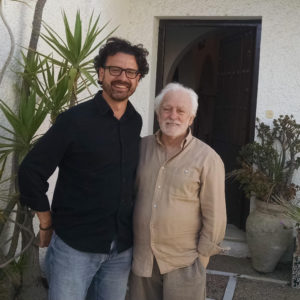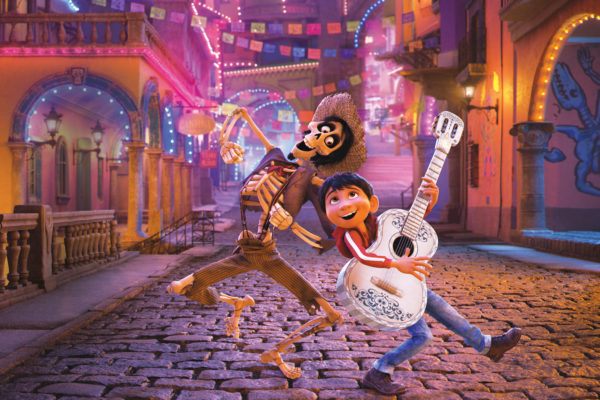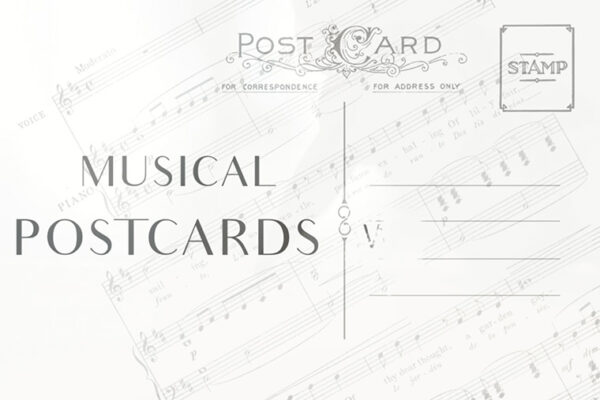Gustavo Lopez, MArch ’07, began playing guitar seriously at age 19, rock and heavy metal mostly. As a Washington University architecture graduate student in the mid-’00s, however, he finally found his true love: flamenco.
Like most Americans, he didn’t know much at first about the flashy genre, known for its brisk guitar and flower-clad dancers in long dresses. After all, flamenco isn’t just a style of music. It’s an insular culture with hundreds of years of history, based primarily in the south of Spain. And it was there, during his 2006 WashU summer study-abroad program in Barcelona, where Lopez’s fascination with flamenco solidified.
“I saw Paco de Lucía in Barcelona at the opera house; he’s like flamenco’s Picasso,” Lopez remembers. “In little shops I bought a lot of CDs that you couldn’t find in the U.S., and I bought my first real guitar in Madrid.”
More than a decade later, Lopez has gone all in on his flamenco obsession. He quit his job in 2017 as an architect in Seattle, and he’s been studying the musical discipline on a Fulbright grant in Seville since last September. The experience has sent him down a rabbit hole in his attempts to understand a genre that touches him deeply — and is widely misunderstood.
“It’s the cultural music here of the Gypsy people, the Roma, in the way the blues is the cultural music of African Americans in the Southern U.S.,” he says. “Once I started hearing the good stuff, it really just bit me. It’s such an intense type of expression. When it’s done well, it’s so powerful.”
From Twin Falls to Seville
Lopez grew up in Twin Falls, Idaho, before receiving an undergraduate degree in architecture from UNLV. His father comes from El Salvador (“about four generations removed from Spain”), and his mother is American of German heritage. Yet, it was actually his mom who first inspired him to start strumming. She played classical guitar as a hobby; he quickly segued into the harder stuff.
“There are lots of flamenco guitarists who come from a rock background,” he says. “That makes sense. Because with both genres, there’s a fascination with speed and complexity in general.” Lopez went on to record his own flamenco-jazz album called Punto Lejano (in English: A Distant Point) in 2014. And today his Fulbright lets him take his interest to the next level. He’s working not just to perfect his guitar-playing style, but to introduce the genre to a whole new segment of society.
Any discussion of flamenco begins with the Roma, a long-persecuted minority group living mainly in Europe and often disparagingly called Gypsies. Though known for their nomadic lifestyle, they’ve been settled in Spain for 500 years. For many, flamenco along with bullfighting have been ways of escaping poverty. “The Roma and those generally connected with flamenco have always been associated with the lower social classes,” Lopez says. “A lot of them are illiterate, and they usually don’t know how to write music. So flamenco is passed down through the community and through the family. And that’s why it’s based in guitar, because they couldn’t afford pianos.”
“It’s a merging of cultures,” adds musician and scholar Brian Chin, who has collaborated with Lopez. “Flamenco is a mashing together of North African music from an Arabic tradition, 12th-century southern Spain folk music and northern Indian music. It’s really old — dating back to the 12th century — but it’s academic tradition is still very young.”
Chin would know. He’s an associate professor of music at Seattle Pacific University who also plays trumpet for the Tacoma symphony. Lopez originally met him after a lecture Chin was giving on minimalism and the music of Philip Glass — offered for concert ticket holders the day before Philip Glass performed in Seattle. Taking one of Chin’s business cards, Lopez contacted him a few weeks later wanting a trumpet on his album. The two went on to record and perform flamenco together. Further, Chin even spent time in Granada, Spain, seeing performances, meeting some musicians and playing with them a little.
“As a [musical] improviser, I was excited because flamenco is a genre that doesn’t play by traditional rules. Most of flamenco’s forms are based on repeating rhythmic patterns,” Chin explains. He anticipated that the music was ripe for academic investigation, but there was one problem: Chin’s instrument, the trumpet, isn’t traditionally part of flamenco, which is focused on singers, dancers and guitarists.
“I realized that I could never permeate the culture like Gustavo could,” Chin says. “We were having a conversation, and I told him that he didn’t need to be in academia to apply for a Fulbright.”

The possibility of immersing in flamenco via a Fulbright had captured Lopez’s imagination earlier, but now he seriously revisited the idea. Although he was already in his mid-30s and making headway in his architecture career, which he enjoyed, he couldn’t pass up the opportunity to devote himself unequivocally to his passion.
“The plan wasn’t to ‘get out’ of architecture,” he says. “Though if that were to happen organically, I would look into it.” For now he’s flying without a net. His girlfriend has joined him abroad, and though he could potentially return to his job, at this point he has no idea if he’ll return to Seattle at all.
Since arriving to Spain in September 2017, Lopez has been taking flamenco classes, mastering his guitar, and schooling himself in every aspect of the culture. It helps that his home base, Seville, is one of the most beautiful cities in the world. A flamenco school there called The Cristina Heeren Foundation sponsors his Fulbright project, and he makes frequent trips around southern Spain, recording interviews with famous and influential musicians. Many of them are dying off (sadly Paco de Lucía passed away in 2014), and most aren’t living the lifestyles one might associate with successful musicians. “They’re really normal people,” Lopez says. “Some are stable economically, but there are very few superstars in flamenco. For the most part, they live very modestly.” Lopez catalogues these interviews on his website, called Palabras Flamencas, which features conversations with everyone from dancers to singers to guitar crafters.
And this isn’t even his most ambitious undertaking. Along with Chin, who is assisting with interpreting the musical notation, Lopez is attempting to bring this notoriously inaccessible music to the rest of the world. “There are codified rules in flamenco that aren’t written down that would take a dedicated artist a decade to learn, and it’s mostly taught in Spanish,” Chin says. “So if you’re not living in Spain, it’s not going to happen.” He and Lopez, however, are seeking to bridge this gap by transcribing flamenco’s traditional melodies and verses. It’s not as easy as it sounds, though. Since the music is so idiosyncratic, they’re forced to modify standard musical notation, a complicated process that requires communicating the “essences” of melodies as well as areas for improvisation.
“It’s like pulling a house apart — say, a two-bedroom rambler — but keeping the main bones intact,” Chin says. “You can put it back and decorate it any way you want, but it’s still a two-bedroom rambler.”
“What’s difficult about flamenco is that it’s almost exclusively an oral art form,” Lopez adds. “So, the goal is to use this notation to share how it’s done.”
Surrounded by so many masters, Lopez’s experience has been incredibly humbling. The better he gets at flamenco guitar, the more he realizes he still has to learn. Hoping to find additional funding to extend his time in Spain, he has come to realize that his calling isn’t just to be the best musician possible; it’s to help spread the gospel of flamenco.
“My real contribution is to try to expose it to more people in the United States when I come back,” he says. “The more people know what it really is, the more they’re going to fall in love with it. If I can share it, I’ll be playing some small role in helping the art form grow.”
Ben Westhoff is a freelance writer and frequent contributor to Washington magazine.
For more on Gustavo Lopez and his music, visit his website.


